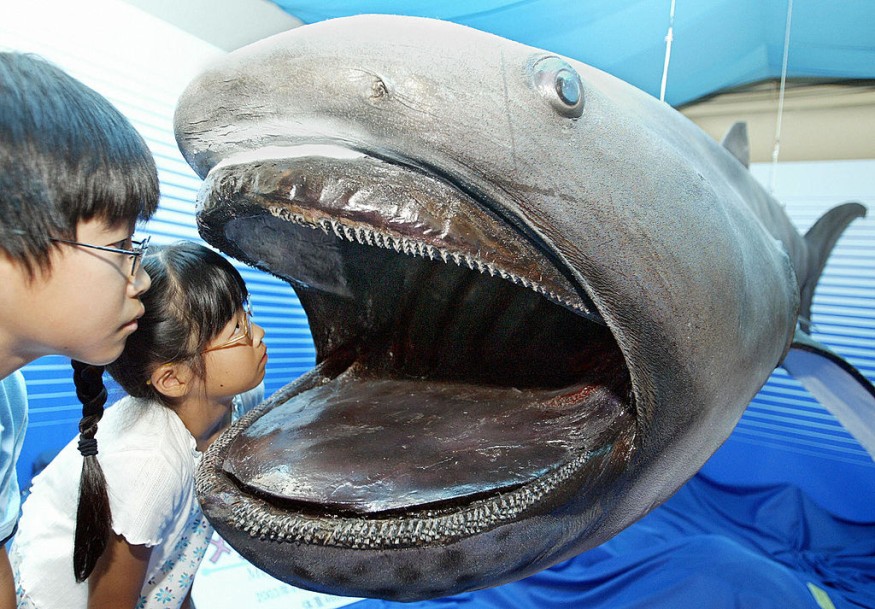
A recent study said that a megamouth shark gave birth to offspring live rather than lay eggs.
Scientists said that the first ever record of a pregnant megamouth shark has been documented after a dead female was washed up on the shores of the Philippines.
They said the 18-foot-long (5.5 meters) megamouth shark (Megachasma pelagios), which was found on November 14 in Barangay Ipil, Dipaculao in Aurora, was pregnant with seven pups when it was washed up.
One pup was found alongside her while six more fetuses remained inside the body of the 5.6-meter-long female megamouth shark that was stranded in the Philippines.
Giving Birth To Pups
Experts noted that megamouths (Megachasma pelagios) are ovoviviparous, which means that their eggs develop inside the mother's body and that later on, she gives birth to her young.
The Marine Wildlife Watch of the Philippines said that the first may have been born because sharks usually expel their pups or eggs when they are captured or stranded due to stress.
The National Museum of the Philippines said that necropsy was conducted on the mother megamouth shark and one of its pups by Dr. Princess Ann Tayag, Vet II of the Fisheries and Quarantine Unit of BFAR III with the supervision of Dr. AA Yaptinchay of Marine Wildlife Watch of the Philippines (MWWP) via video call from Manila.
The examined sharks were later buried for future retrieval.
Meanwhile, in coordination with Dr. Nico Jose Leander of BFAR III-RFRDC through Dr. Jo Marie Acebes of Balyena.org, the remaining six megamouth shark pups were transported to the National Museum of the Philippines for further detailed examination and processing.
The examination was led by Dr. Yaptinchay and Elson Aca, both from MWWP and the Philippine Aquatic Red List Committee (PARLC), with the assistance of the staff from NMP-Zoology Division and volunteers from MWWP and Beterinaryo sa Fort Animal Clinic.
The specimens of the young sharks will be fixed and preserved for further research and study. Moreover, it will be part of the NMP's reference collections and future exhibitions.
Smallest Filter-Feeding Shark
The elusive megamouth shark, discovered only in 1976, is the smallest of the three species of filter-feeding sharks which include the whale and basking sharks.
They have a remarkably massive mouth; therefore, they were given that kind of name.
The Philippines is one of the most important habitats for the megamouth shark, ranking number two globally, next to Taiwan, with the greatest number of reports for this species.
Unfortunately, majority of the megamouth sharks recorded from the Philippines are from stranding and accidental capture in fishing gear resulting in the death of the animal.
Megamouths are filter-feeding sharks that live in the deep sea. Fewer than 120 individuals have ever been captured or observed.
This species has only been observed in the wild a few times, and fewer than 60 individuals have ever been recorded, according to the ocean conservation organization Oceana.
These megamouth sharks usually weigh up to 2,700 pounds (1,225 kilograms). The mouth of a 16-foot (5 m) megamouth shark is around 4 feet (1.2 m) wide.
Megamouth sharks spend most of their lives in the dark, living as deep as 15,000 feet (4,600 m) below the surface and only coming up to shallower water during the night.
© 2025 NatureWorldNews.com All rights reserved. Do not reproduce without permission.





